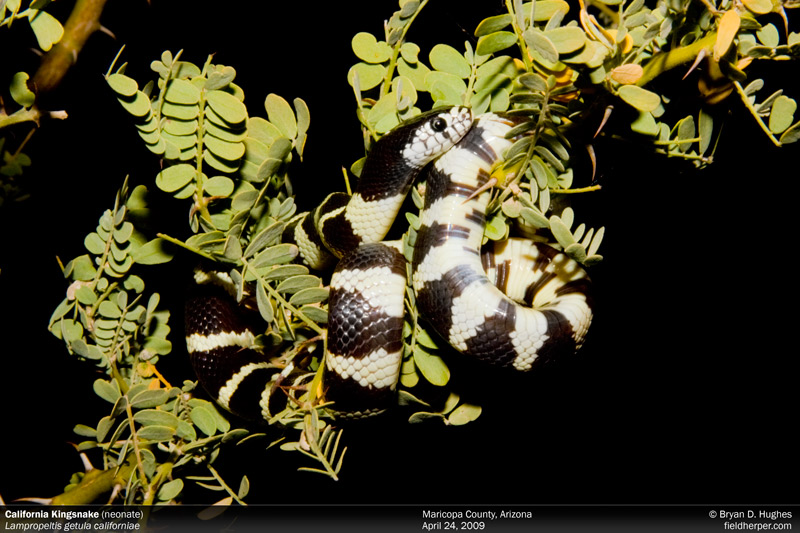Just a little guy, curious about the big apre standing over him taking pictures.
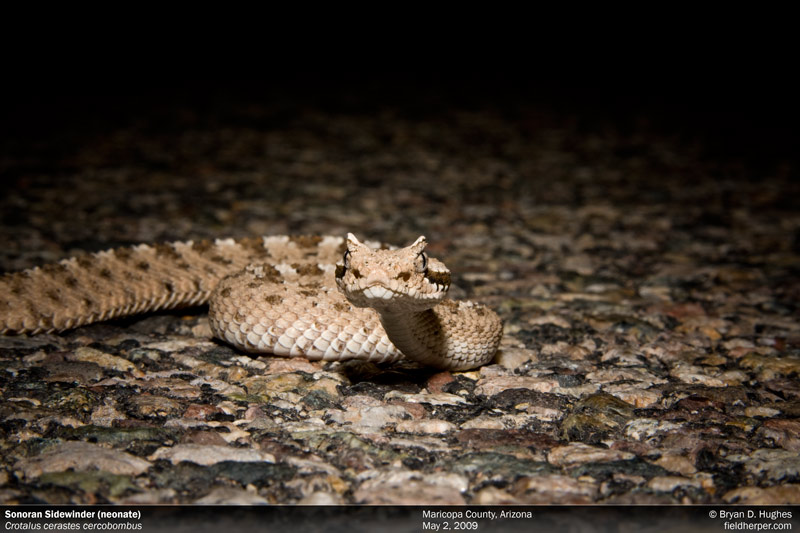
Just a little guy, curious about the big apre standing over him taking pictures.

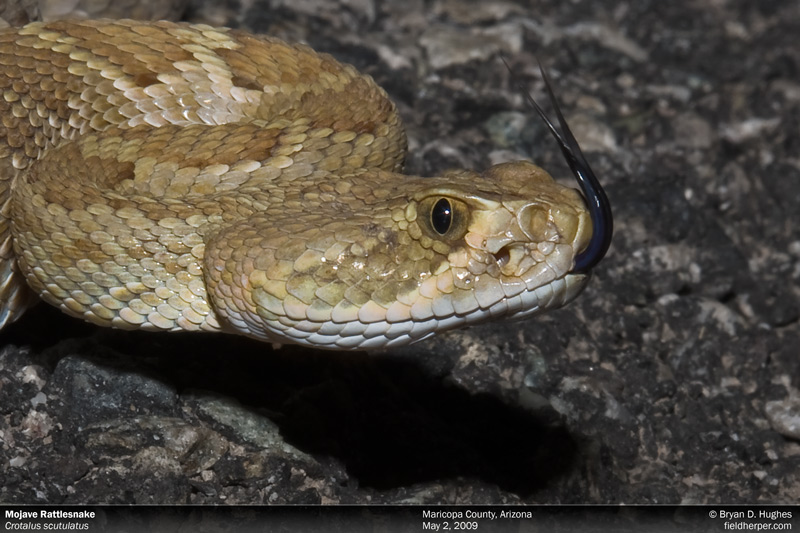
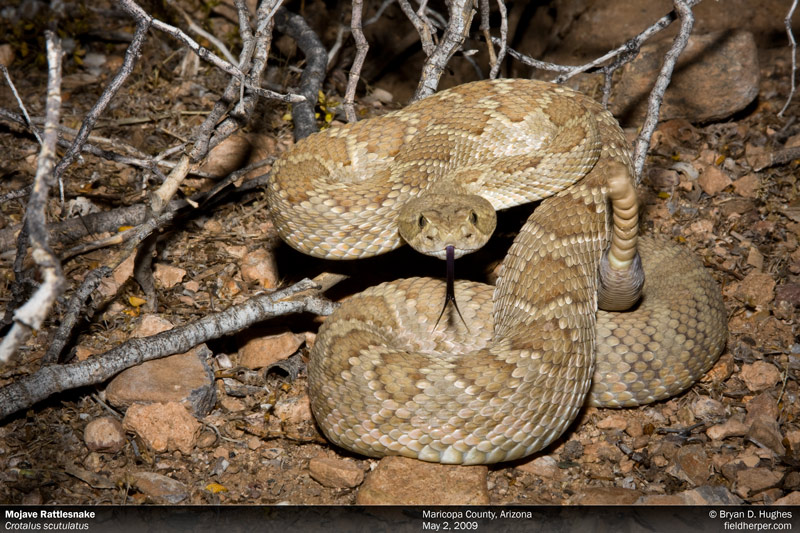
To people who aren’t experienced, the Mojave Rattlesnake can be difficult to distinguish from the Western Diamondback Rattlesnake. Their convergent patterning and tail banding can be confusing without an understanding of some of the basic differences in their physiology. Below is a photo of one of these differences, the number of scales between the ocular scales which cover the eyes. In the Mojave, there are 2 (occasionally 3). In a Western Diamondback, there are 4 or more.

Here are a couple of orange and pink phase Southwestern Speckled Rattlesnakes, Crotalus mitchellii phyrus, I found the other day. The bright salmon one with blue eyes currently resides in my office. Truly beautiful snakes.




After 10 hours of hard hiking and searching in the June heat, I found my target: the Arizona Black Rattlesnake, Crotalus cerberus. This is only the third I’ve ever seen, and the darkest coloration of my experience with them.
Here it is as it was found, sleeping in a rock cut
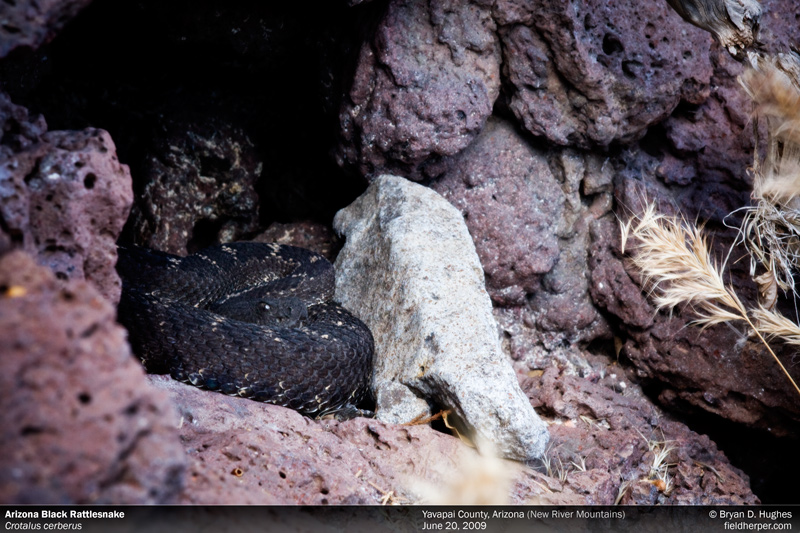
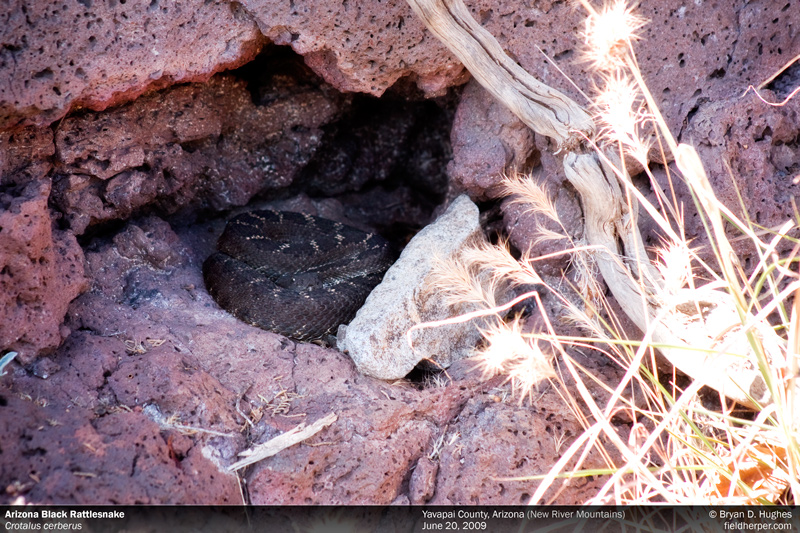
I left to search further into the canyon, but found nothing. On the way out, as the sun had just gone over the edge of the mountains, I found the same snake in a different location, about 100 feet from the original hideout. It was sleeping in the middle of the wash. I was able to once again sneak a few photos without disturbing the animal, and left without it even knowing I had found it both times.

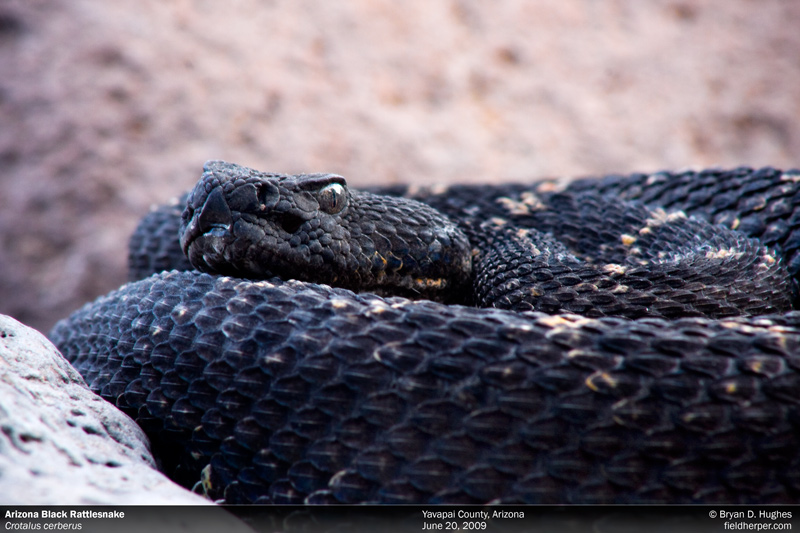

Here’s a tiny Gila Monster, Heloderma suspectrum, Kelly and I came across today while we explored the areas North of our home in Anthem. It was found right at the edge of their range, and was completely unexpected. Actually, I don’t think finding them is ever really expected, so nevermind. This is my 4th in life, and Kelly’s first.

Although this isn’t nearly the smallest Sonoran Sidewinder (Crotalus cerastes cercobombus) I’ve ever seen, it was the one I saw on a night when I was bored enough to try and make it sit on my phone for maybe the nerdiest photo I’ve ever taken. Here they are, and yes I’m a dork.

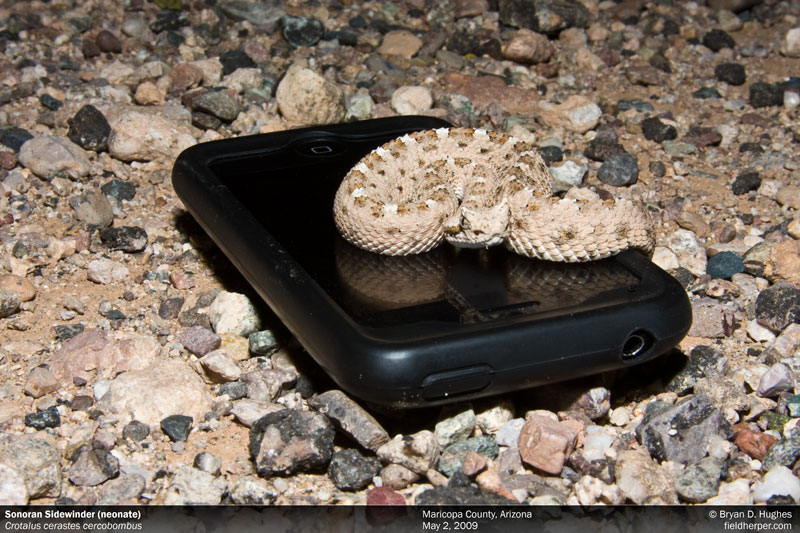
Another example of a colorful Greater Earless Lizard, Cophosaurus texanus, one of the most common lizards I see out there. They’re usually the first interesting thing I see on a trip, and I’m anxious to come away with something to show for my long drive to wherever. One of these days I’ll stop taking so many pictures of them, or at least so I tell myself.
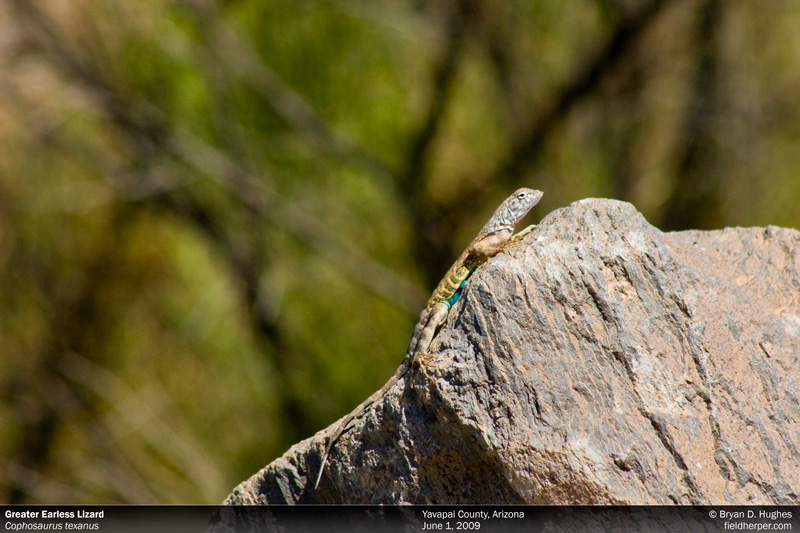
I’ve only seen 2 Mojave Rattlesnakes (Crotalus scutulatus) at a home; this one, and another just out front of my own home about a week earlier. They’re cool, decently variable snakes that I always enjoy finding, but I must admit that they really keep me on my toes. They’re particularly dangerous, as their dangerous neurotoxin puts them a step ahead of many of the other rattlesnakes one would encounter. Unlike the tissue-destroying venom of other rattlesnakes in Arizona, the neurotoxin of a Mojave bite attacks the nervous system, and is capable of paralyzing critical functions (such as breathing). My own observation is that they also tend to be generally more nervous and aggressive than many other species, making them double trouble. The one and only snake that ever actually jumped at me, for instance, was a Mojave. The young snake struck with such intensity that the entire animal actually lifted off the ground and landed about a foot in front of it’s original position.
Beautiful snakes, but I give them an especially wide buffer.


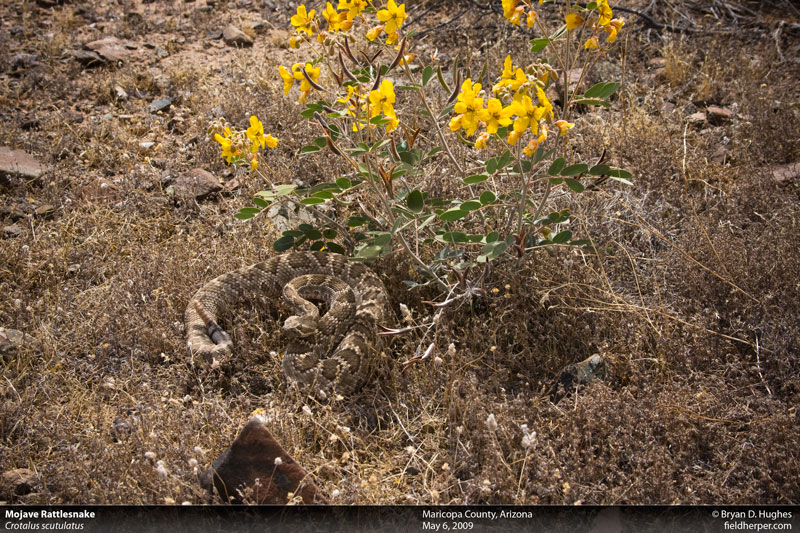
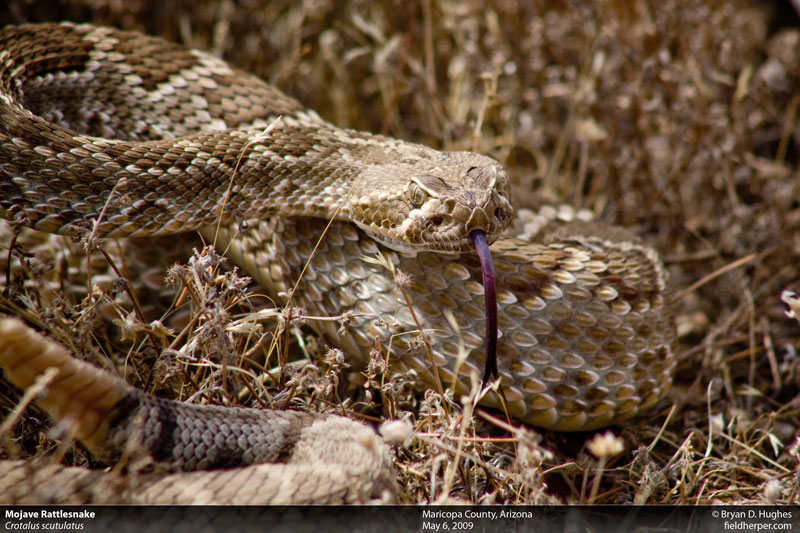
This is the most colorful Desert Spiny Lizard, Sceloporus magister, I have ever seen. While not displaying a lot of variety, the head is solid red-orange. It was also very large. In fact, upon first seeing it, I thought it was a squirrel. Cool lizards.

One morning awhile back I spent the afternoon sitting behind a wall just North of Congress, Arizona, and watched the Greater Earless Lizards (Cophosaurus texanus) in great tumult over a female. Over the course of an hour or so, many males came, danced, and were either driven off or just ran away in apparent frustration. The males can be wonderfully colorful, and they brought their best that morning.



Finally someone made a move. Sorry for the blurry crap photo.

Oh, and the title of this post is from the album I’m listening to right now, The Hazards of Love
by the Decemberists. Fitting, so there it goes.
Here’s a very young california kingsnake (Lampropeltis getula californiae) I found out doing his thing one night.
After missing a bite, it curled into a defensive ball.

I moved it to the base of a tree, where, which to my surprise it climbed up into the lower branches and then just sat still for some photos.
